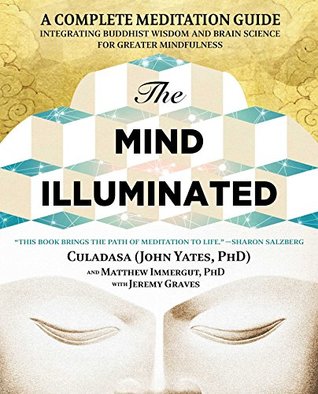More on this book
Community
Kindle Notes & Highlights
Started reading
September 12, 2021
What we make of our life—the sum total of thoughts, emotions, words, and actions that fill the brief interval between birth and death—is our one great creative masterpiece. The beauty and significance of a life well lived consists not in the works we leave behind, or in what history has to say about us. It comes from the quality of conscious experience that infuses our every waking moment, and from the impact we have on others.
only by overcoming our false, self-centered worldview can we realize our true nature.
Chris Coletti liked this
You simply cannot develop mindfulness without stable attention. Until you have at least a moderate degree of stability, “mindfulness practice” will consist mostly of mind-wandering, physical discomfort, drowsiness, and frustration. Like two wings of a bird, both stable attention and mindfulness are needed, and when they are cultivated together, the destination of this flight is śamatha and vipassanā.
Chris Coletti liked this
revisit this chapter from time to time to keep the big picture fresh in your mind. The more clearly you understand the Stages, and why they happen in the order that they do, the quicker and more enjoyably you will walk the path toward happiness and freedom.
skillful means and positive reinforcement are much better for pacifying the mind than blind, stubborn persistence. Finesse and patience pay off.
the untrained mind produces distractions that lead to forgetting, which results in mind-wandering.
Skills: Reinforcing spontaneous introspective awareness and learning to sustain attention on the meditation object. Spontaneous introspective awareness is the “aha” moment when you suddenly realize there’s a disconnect between what you wanted to do (watch the breath) and what you’re actually doing (thinking about something else). Appreciating this moment causes it to happen faster and faster, so the periods of mind-wandering get shorter and shorter.
Certain words we can’t avoid using when we talk about meditation, such as “achieve” and “master,” only reinforce this idea. We often believe we should be in control, the masters of our own minds. But that belief only creates problems for your practice. It will lead you to try to willfully force the mind into submission. When that inevitably fails, you will tend to get discouraged and blame yourself. This can turn into a habit unless you realize there is no “self” in charge of the mind, and therefore nobody to blame.
Chris Coletti liked this
“You” don’t play catch. Instead, you just intend to catch the ball, and the rest follows. “You” intend, and the body acts.
Chris Coletti liked this
Intentions repeatedly sustained over the course of many meditation sessions give rise to frequently repeated mental acts, which eventually become habits of the mind.
Chris Coletti liked this
If this doesn’t happen, instead of chastising yourself and trying to force yourself to practice, work on strengthening your motivation and intentions.
attention and peripheral awareness are two different ways of “knowing” the world.2 Each has its virtues as well as its shortcomings. Attention singles out some small part of the content of the field of conscious awareness from the rest in order to analyze and interpret it. On the other hand, peripheral awareness is more holistic, open, and inclusive, and provides the overall context for conscious experience. It has more to do with the relationships of objects to one another and to the whole.
The complex motor skills you need for dart throwing also involve training an unconscious process using intention and repetition. By holding the intention to hit the target as you throw the darts, you train unconscious and involuntary hand-eye coordination until you can consistently hit the target.
The condition in which the mind “stands back” to observe its own state and activities is called metacognitive introspective awareness.
“awareness deficit disorder.”14 This means a chronic lack of awareness due to overusing attention.
A famous analogy in Zen compares the mind to a pool of water. This is a helpful way to think about the training and goals of meditation. If the water is agitated, churned up by wind and currents, it doesn’t provide a clear reflection, nor can we see to the bottom. But as the water calms, the debris that made the pool muddy begins to settle, and the water itself becomes clear. A calm pool also reflects the sky and clouds perfectly.


